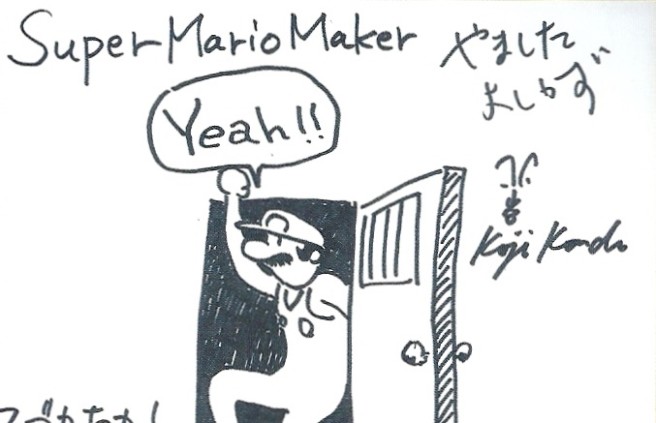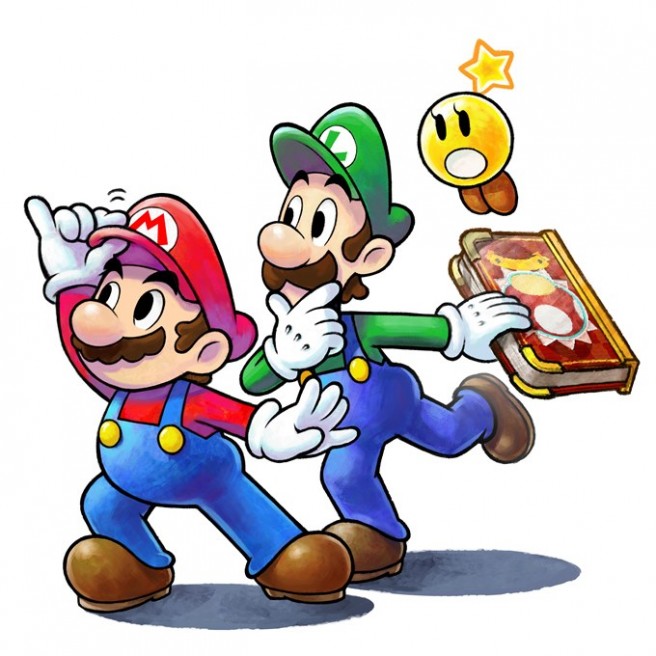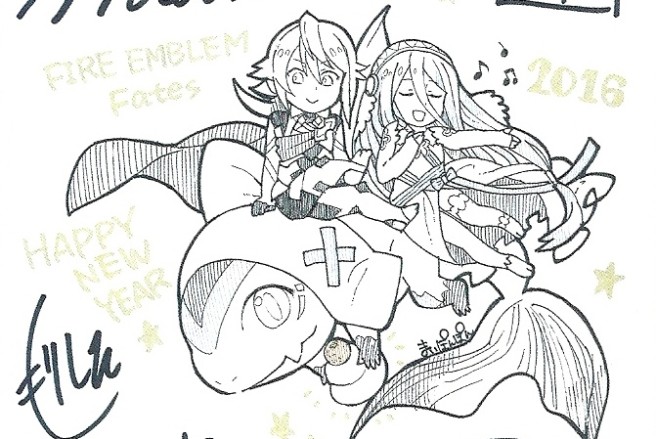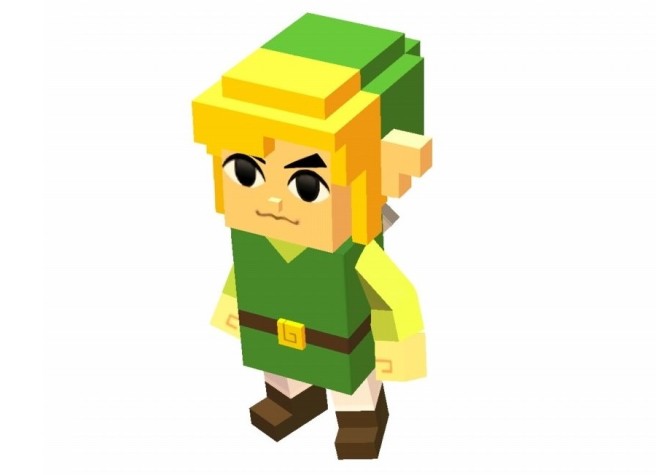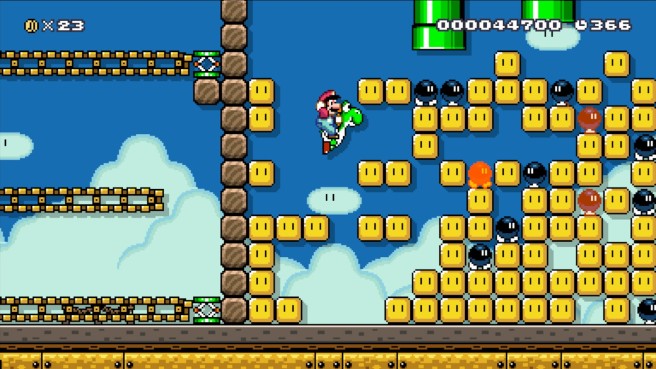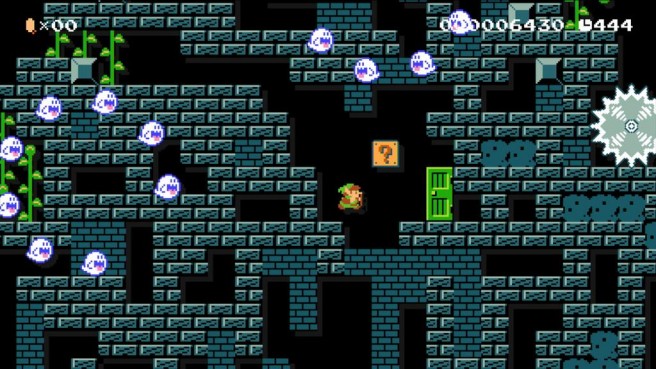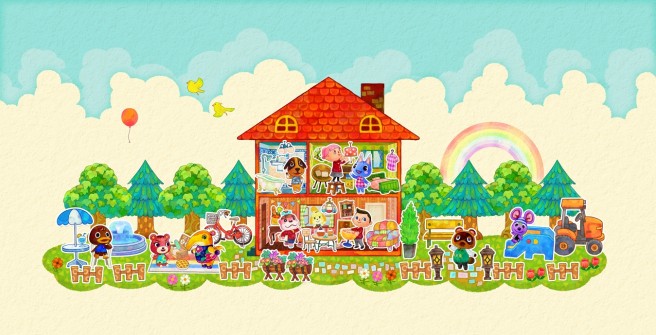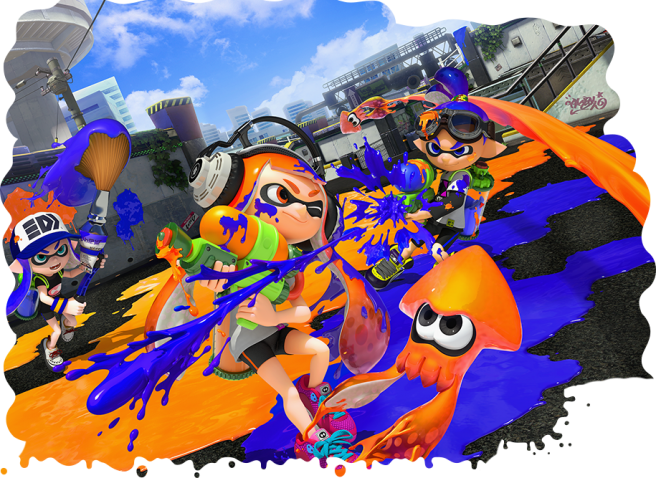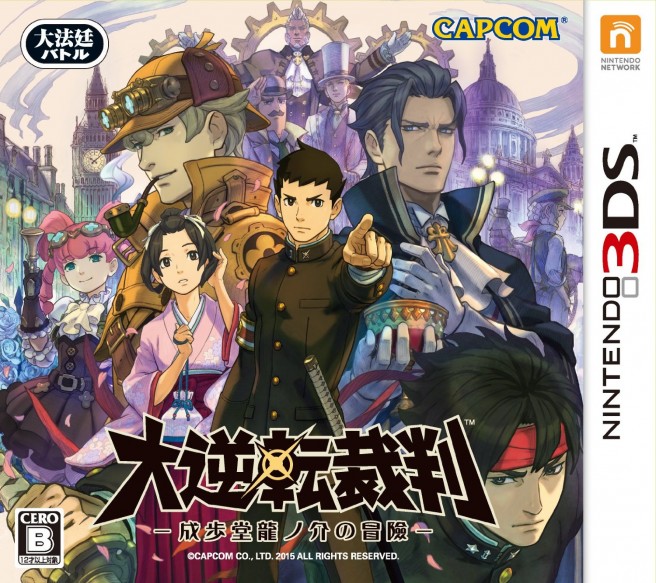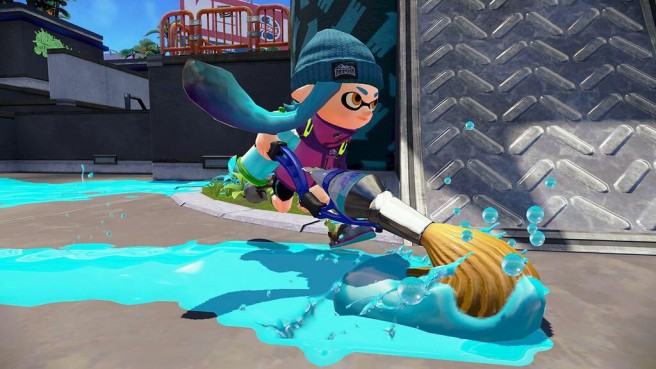New Year’s dev drawings – Super Mario Maker, Ace Attorney, more
Posted on 9 years ago by Brian(@NE_Brian) in General Nintendo, Images | 4 Comments
Japanese magazine Nintendo Dream is celebrating the start of 2016 in its latest issue. Various game developers and other key members related to the industry contributed handmade drawings, including representatives from Nintendo, Capcom, Square Enix, and more.
Over the next few weeks, we’ll be sharing the various images featured in Nintendo Dream. The second set of drawings, rounded up in the gallery below, features Super Mario Maker, Ace Attorney, and some others. We also have text accompanying the shots (including many developer comments!) after the break.
More: Nintendo Dream, top
Mario & Luigi: Paper Jam devs on bringing in Paper Mario, dash mechanic, more
Posted on 9 years ago by Brian(@NE_Brian) in 3DS, News | 0 comments
A few members of the Mario & Luigi: Paper Jam development team were interviewed in this month’s issue of Nintendo Dream. The lineup includes producer Akira Otani (Nintendo), director Shunsuke Kobayashi (AlphaDream), and director of battle team Jun Iwasaki (AlphaDream).
We’ve translated some excerpts from the interview after the break. The staff commented on how it was decided that Paper Mario would appear, the new dash mechanic (and Shigeru Miyamoto signing off on it!), and more. Read on below for the full breakdown.
New Year’s dev drawings – Zelda: Tri Force Heroes, Splatoon, Fire Emblem, more
Posted on 9 years ago by Brian(@NE_Brian) in General Nintendo, Images, News | 2 Comments
Japanese magazine Nintendo Dream is celebrating the start of 2016 in its latest issue. Various game developers and other key members related to the industry contributed handmade drawings, including representatives from Nintendo, Capcom, Square Enix, and more.
Over the next few weeks, we’ll be sharing the various images featured in Nintendo Dream. The first set of drawings, rounded up in the gallery below, features The Legend of Zelda: Tri Force Heroes, Splatoon, Fire Emblem, and some others. We also have text accompanying the shots after the break.
More: Nintendo Dream, top
Zelda: Tri Force Heroes – Cheer Outfit’s idol origins, how the Timeless Tunic came to be
Posted on 9 years ago by Brian(@NE_Brian) in 3DS, News | 3 Comments
Last month’s issue of Nintendo Dream contains an interview centered around The Legend of Zelda: Tri Force Heroes. The Japanese magazine spoke with director Hiromasa Shikata, designer Keisuke Umeda, and producer Eiji Aonuma. There were some interesting comments shared, not to mention valuable concept art for Zelda fans.
Costumes are naturally a big part of Tri Force Heroes. During the interview, Umeda talked about what elements were taken into consideration when designing these for Link:
“The first thing is to make the effect [of the costume] easy to understand. Then comes making it look interesting and easily recognizable with colors. Designs were made while keeping these three things in mind.”
One piece of concept art included in the interview is of the Cheer Outfit. Here’s a look at that:
Super Mario Maker devs found it a bit tough to implement Yoshi
Posted on 9 years ago by Brian(@NE_Brian) in News, Wii U | 14 Comments
Yoshi’s inclusion in Super Mario Maker partially came about thanks to the involvement of producer Takashi Tezuka. In a recent issue of Japanese magazine Nintendo Dream, Tezuka and director Yosuke Oshino spoke about his appearance in the game:
Oshino: We decided to put in characteristic actions like Raccoon Mario, Caped Mario and Propeller Mario during the first phases of development. But Yoshi had much controversy…
Tezuka: I was a bit pushy in requesting to have Yoshi. There were reasons like being responsible for the Wii U game Yoshi’s Woolly World, wanting to use the Yoshi amiibo, and wanting to have some kind of collaboration as it is also Yoshi’s 25th anniversary.
Oshino: But adding Yoshi was complicated, so we discussed what should we do.
Super Mario Maker – origins of costumes, cursors, and a message to fans
Posted on 9 years ago by Brian(@NE_Brian) in News, Wii U | 5 Comments
Last month’s interview of Nintendo Dream contains an extensive Super Mario Maker developer interview. Producer Takashi Tezuka, director Yosuke Oshino, and senior director Yoshikazu Yamashita participated in the discussion.
Several interesting topics came up during the interview, and we’re excited to share a few excerpts with you all. The three team members spoke about how the idea for costumes came together, the different cursors (including some abandoned, an yet strange ideas), and a message for fans regarding the series’ future.
Head past the break for our complete translation.
Animal Crossing: Happy Home Designer devs – spin-off origins, decision to focus on house creation, more
Posted on 9 years ago by Brian(@NE_Brian) in 3DS, News | 3 Comments
Last month’s issue of Japanese magazine Nintendo Dream features an interview with producers Hisashi Nogami and Aya Kyogoku. Throughout the discussion, Nogami and Kyogoku touched on such topics as how the game to be and how it became a spin-off, the decision to focus on house creation, and more.
Our translation of the two developers’ comments is now in. Read up on what they shared with Nintendo Dream below.
ND: What was the original starting point of the project?
Nogami: Although many customers have accepted Animal Crossing, these games have an aspect that you can do anything and if you don’t decide to do something by yourself, the game won’t progress. Therefore I guess it is a title that divides people.
ND: You say that while New Leaf has sold more than 4 million copies [in Japan]!
Everyone: (laughs)
Kyogoku: I’m truly grateful that so many people have played the game, but I also think that there are people who think that the gameplay doesn’t suit them or they don’t understand what the game is about.
Nogami: So when it came time to create the next Animal Crossing, it turned out as a spin-off that focuses on an element of the Animal Crossing instead of being a traditional game.
Splatoon producer on the game’s origins, 4-on-4 matches, Super Jump, and name
Posted on 9 years ago by Brian(@NE_Brian) in News, Wii U | 16 Comments
This month’s issue of Nintendo Dream has yet another interview with one of the developers behind Splatoon. This time, the Japanese magazine spoke with producer Hisashi Nogami.
Going back to the origins of Splatoon, Nogami commented on how program director Shintaro Sato came up with the idea of inking. Sato wrote a program for a drawing system, which included affixing textures on models and processing shadows. He thought at the time, “If I replace a shadow with the possibility of repainting with a color, wouldn’t that be a new way to play?”
Nogami also spoke about the decision to feature 4 on 4 matches in Splatoon:
Nogami: It’s not like we couldn’t have made 3 vs. 3 battles, but if just one player is splatted, the balance changes drastically and the enemy team can make a push in one go.
Nogami: On the other hand, when we tried increasing the number of players, the effect of splatting one person was small.
Nogami: However, when we tried 4 vs. 4, just splatting one player got the other team into a quite unfavorable situation. It is like a power play in ice hockey.
More: Hisashi Nogami, interview, Nintendo Dream, Splatoon, top
The Great Ace Attorney team on development, thought about starting in London, music
Posted on 10 years ago by Brian(@NE_Brian) in 3DS, News | 2 Comments
In the latest issue of Japanese magazine Nintendo Dream, The Great Ace Attorney director Shu Takumi and composer Yasumasa Kitagawa were interviewed by the magazine.
One of Nintendo Dream’s questions asks Takumi about what left the greatest impression on him during development. Takumi explains that because he was creating a whole new world, it took more time that he anticipated to create scenarios. He was actually in a hospital for roughly a month while The Great Ace Attorney was being made.
“It was just when we had to decide on a logo in order to announce The Great Ace Attorney, so I checked designs in the hospital,” he said. “Seeing the logo reminds me a bit of the scent in a hospital room (laughs).”
Splatoon devs on the level cap, Inkling customization, and more
Posted on 10 years ago by Brian(@NE_Brian) in News, Wii U | 38 Comments
The developers of Splatoon had a whole lot to say about the Wii U title while speaking with Japanese magazine Nintendo Dream this month. Last week, we shared translated comments from directors Yusuke Amano and Tsubasa Sakaguchi as well as producer Hisashi Nogami in which they discussed the map rotation, content updates, and more.
We have a few more final translations to tackle this week. The three Splatoon developers commented on the game’s level cap, Inkling customization, and a couple of other things.
In one section of the interview, Nintendo Dream mentions how many players are at the max level of 20, and asks if this will be raised in the future. Sakaguchi and Nogami were not-committal, but seemed surprised that so many people had already reached the maximum:
Sakaguchi: Er… That is also under investigation currently… We originally expected level 20 to require a nice amount of time to play.
Nogami: [The leveling up has been] so fast that it makes me worry about players’ daily life…
